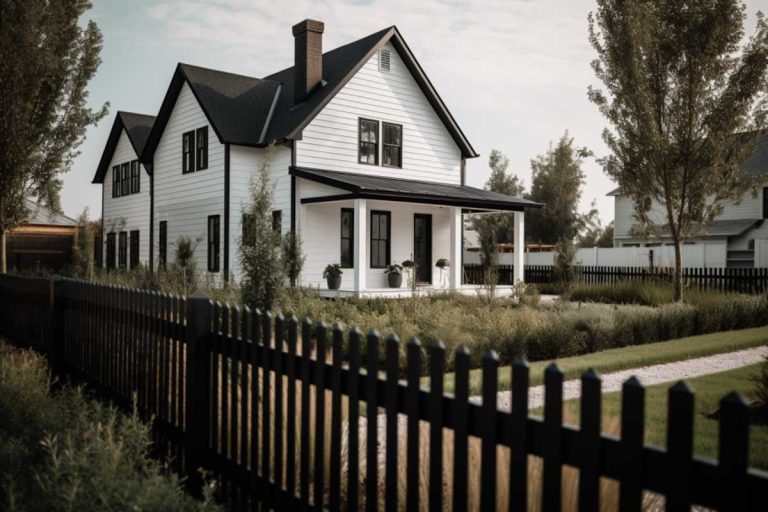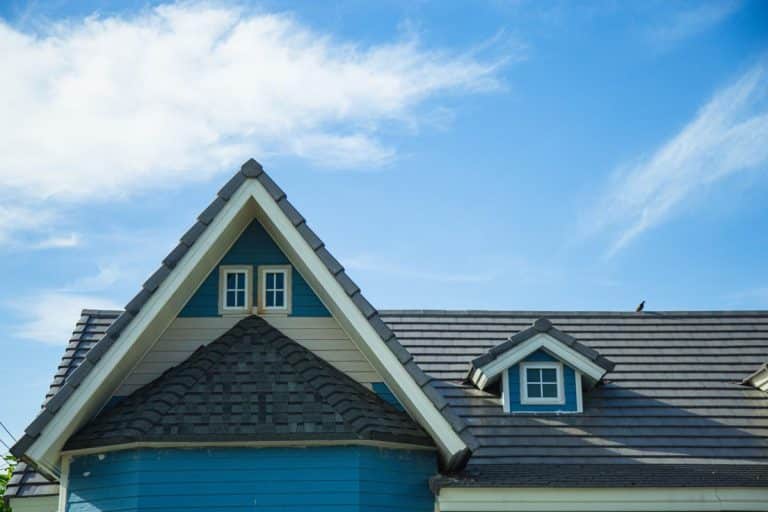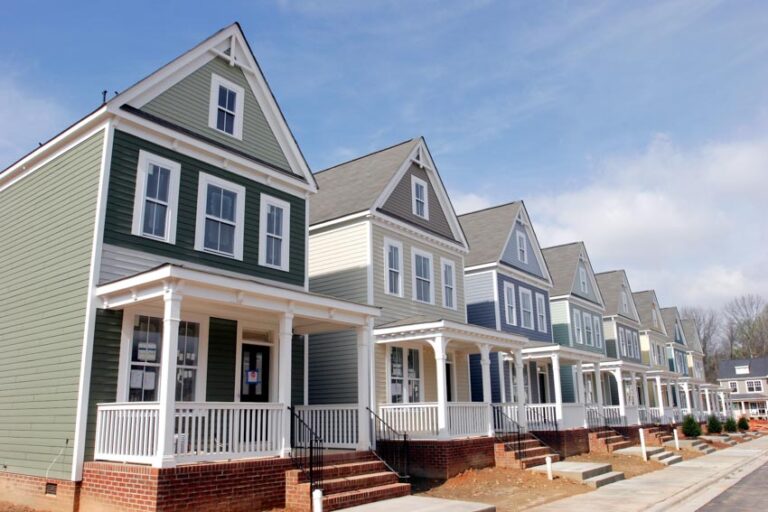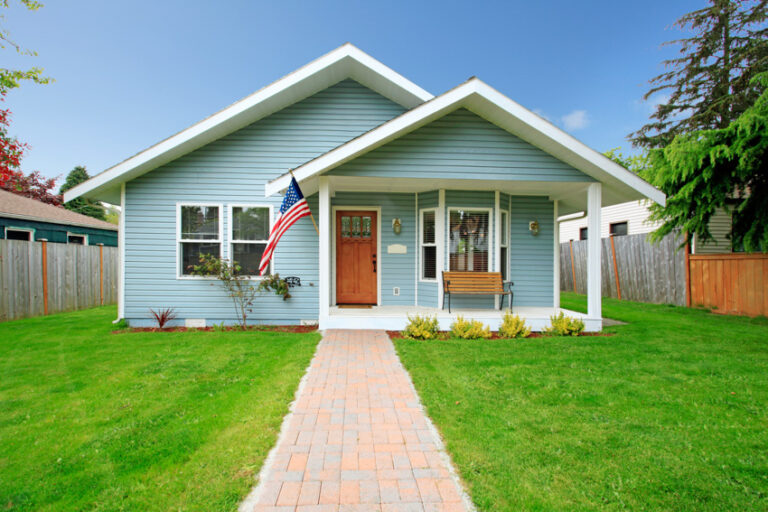Why Choose A Stucco House? Finishes, Colors & Designs

A stucco house finish is typically associated with the Southwestern United States, Spain, Mexico, and other Mediterranean locations. Today, this cement-like finish made with sand, Portland cement, lime, and water is popular in almost any geographical location and applies well to masonry and wood-sheathed houses. Read this ultimate design guide to learn the aspects of a stucco house, including purchasing an existing stuccoed house, maintenance, durability, finish types, painting, and much more.
What Is a Stucco House?
Stucco houses include the siding applied over the base exterior of a house. There are numerous options when using stucco to side a house, including varying textures, colors, and even the type of material. Because stucco is seamless, houses with this finish are resistant to damage from rain or snow, while other sidings with numerous seams may let in damaging moisture. As long as homeowners maintain stucco properly to prevent cracks, it’s a sturdy and durable siding option.

House Styles That Use Stucco
Many Mediterranean-style houses are finished in stucco. These home designs often include arches, front columns, turrets (a small, vertical tower), tall arched windows, and bay windows. Often, these houses have a mottled finish, a smooth final layer of stucco created using a pool trowel. Modern houses also use stucco’s versatility, often combining the finish with cedar and other types of wood as accents. A contemporary house designed completely with line edges and boxy features takes on a striking flair with a stucco finish.
Stucco Benefits
The use of stucco siding includes many benefits.
Fire resistant – These finishes are fire-resistant. A one-inch coating protects a house from fire penetrating the inside wall for up to an hour, meeting strict fire codes for multi-family homes or houses built close to each other.
Durable & long lasting – It’s a durable finish for any home and lasts for decades compared to traditional home siding options.
Lower energy bills – Homeowners with wall finish siding enjoy lower energy bills. Traditional Stucco, with an R-value of 0.20 per inch, does not have a high R-value in itself but aids in keeping out air leaks.
Newer synthetic stucco involves a foam insulation board, a coat of synthetic layer, fiberglass mesh, and a finishing top coat. Synthetic varieties, known as an external insulation and finishing system, EIFS, have an R-value of approximately 5.6. When interior insulation is included, the R-value equals 16 or higher.
Stucco Colors
Many new and chic stucco colors match almost any home style, along with the traditional colors and Adobe look. As this finish grows in popularity, so do the various colors. Portland cement is the main ingredient of plaster mixtures, and the basic finish material is gray or white. For colored applications, pigment or tint is added to the base mix—mixtures with a pigment added can save money on the house needing a new coat of paint later.
Tan, or sandy color, is traditional on older plastered homes. Toned-down yellow and gold hues are popular, along with a light yellow-tinted white. White is deceptive and comes in countless versions, meaning homeowners wanting a true white must look for white with gray tones instead of pink or blue. Forest greens and pale sage colors are popular for homes in wooded areas, and ocean blues, light blues, and gray blues are favored for homes along the ocean.
Common Colors of Modern Stucco Homes
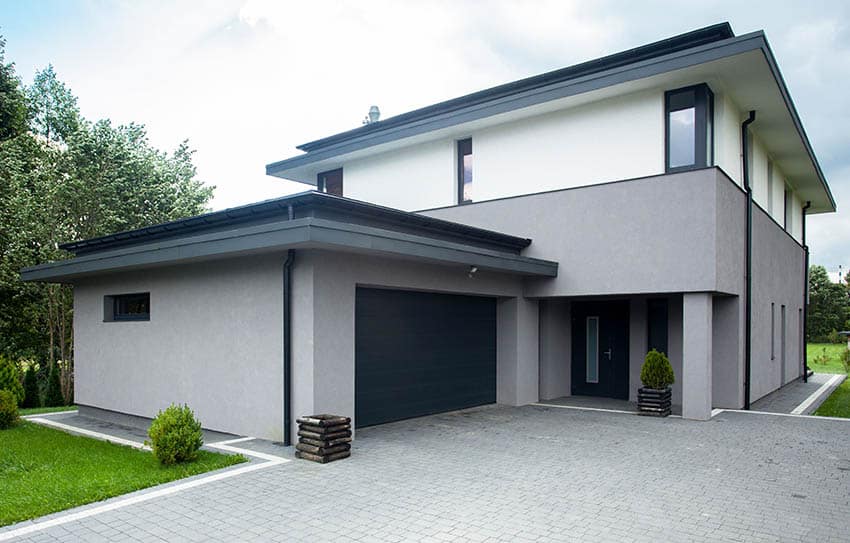
Modern roughcast house colors today include base colors paired with different trim colors, such as pewter or a gray base with white trim, a stark black base with white trim, or a pure white base with black trim. Ocean colors like misty blue with deep, dark blue trim are popular on contemporary, clean-lined home designs. Many ultra-modern stuccoed homes use two shades of color, such as tan with gold or light blue with a darker blue. These colors are divided by the opposite or facing walls of the house.
Stucco Exterior Finishes
When using roughcast for a house’s siding, homeowners have quite a few finishes to choose from. Different textures better match a home’s style and colors, along with any stone or wood highlights.
Dash Finish (Roughcast Style)
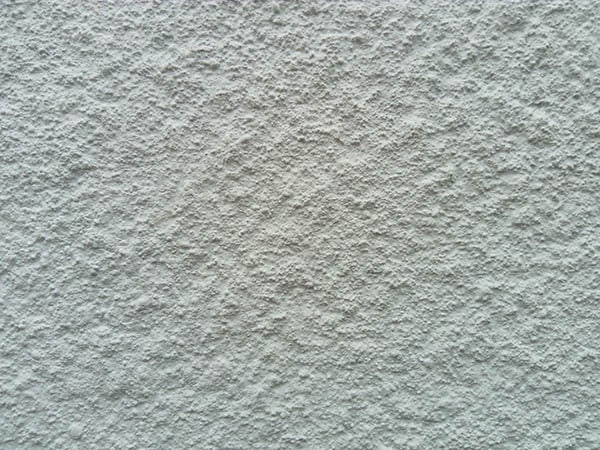
Dash finish is a gravel-looking roughcast popular with homeowners, matching any style home, and works with traditional and synthetic mixtures. For larger applications, a dash finish is sprayed using one to three coats. If necessary, it can be applied by hand with a trowel for smaller areas.
To get a heavy texture while spraying with a hopper gun, one should use a larger amount of texture material and less airflow. For a medium texture application, an even amount of texture and air should be applied. For a fine texture, one can use more air pressure.
When it comes to maintenance, this is a style of texture that can be easily patched as long as the color can be matched correctly.
Sand Finish

A sand finish is common on commercial buildings and is also known as a float finish because a foam float, similar to a grout float, is used to apply the texture. This finish only requires one coat for complete coverage, making it a quick process. The surface texture is sand-like and has different grains, such as coarse, medium, and fine. A float finish hides imperfections better than other finishes.
Both synthetic/acrylic or traditional texture types can be used to create a sand/float finish. It is typically applied using a trowel. However, it can be applied with a spray and then troweled to get the desired results. The sand finish can be easy to patch as long as one can match the original color.
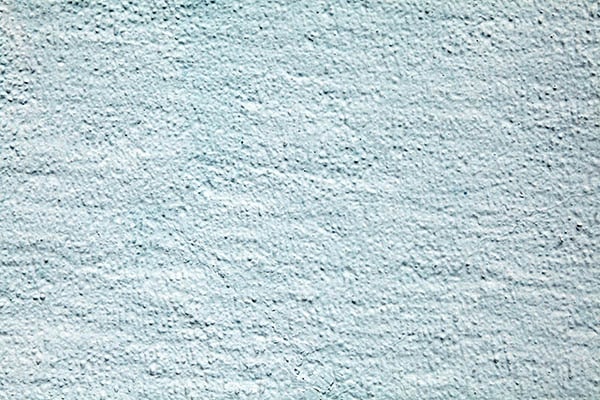
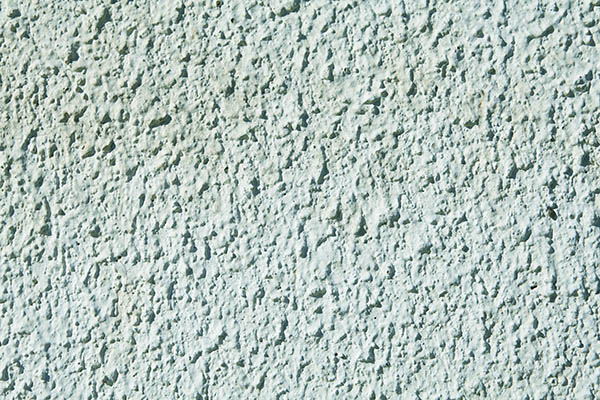
Cat Face Finish (Montalvo)
This finish also referred to as a Montalvo or California finish, creates a pattern with a smooth surface dotted with different-sized rough areas called “inclusions.” These rough spots appear as cat faces looking through the texture. To achieve this finish, the first coat is a rough coat, and the topcoat is smooth, with spots left uncovered to reveal the rough undercoat. This finish works with traditional and synthetic mixtures.
Skip-Trowel Texture (Lace)
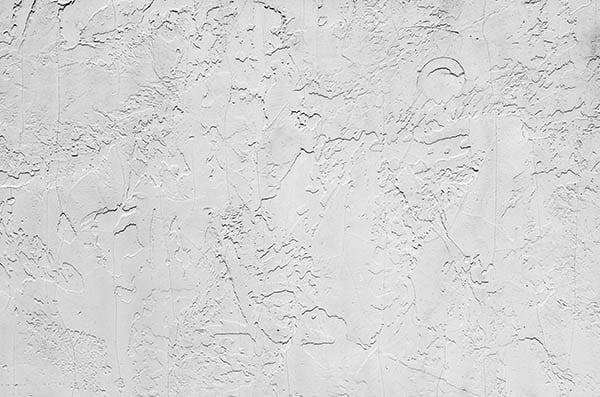
A typical roughcast recalls a skip-trowel texture, also known as lace. It’s a rough finish created with two coats: a base coat and a finished texture coat. The mixture can be applied by hand or sprayed on and is flattened with a trowel into a lace pattern. A skip trowel texture is well suited for hiding imperfections and can be applied in fine, medium, or coarse grain patterns.
Smooth Finish
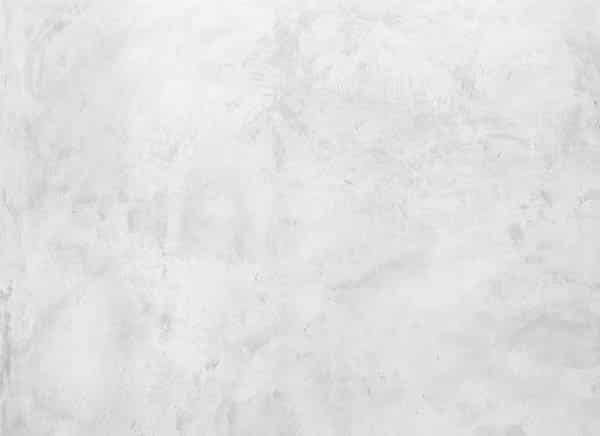
A smooth finish is the most difficult finish to create, but it is an increasingly popular surface. A pool trowel creates a smooth final layer, is aesthetically pleasing, and easy to find in a wide choice of colors. Synthetic roughcast works better with this finish than a traditional mixture. To get a mottled design, one can add colors to the wall during application. This finish can crack more than many of the alternatives and maybe a little more challenging to patch.
Santa Barbara Finish
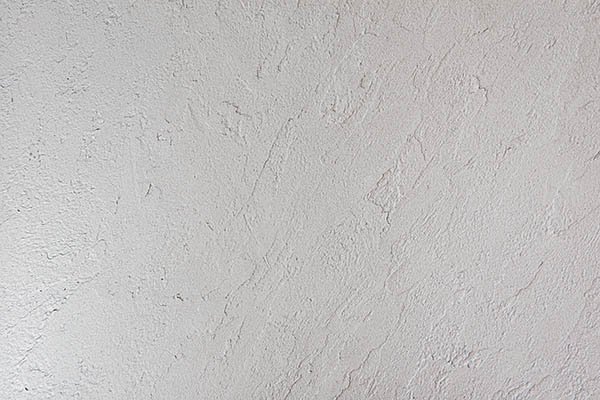
A Santa Barbara finish contains fine sand particles, which, once applied, create an Adobe look. Colored sand allows variations in the very smooth finish. This finish will not work with synthetic material, only traditional stucco mix. Typically, two coats of texture are applied using a pool trowel. The finished product provides a traditional style look.
Worm Finish
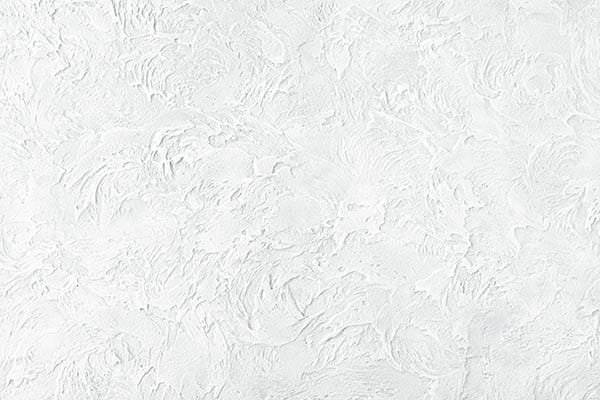
This finish, called a putz or swirl finish, was once very popular but is not often used today. It produces an interesting visual design. When a trowel moves over a fresh coating, indents and lines resemble worms. The application is performed by hand and created by rubbing a plastic trowel in circular directions. The process creates a different design each time. Stuccoed walls with a wormfinish are difficult to patch when they crack.
Types of Houses with Stucco Material
Many homes have mixed siding materials, such as wood, brick, and stucco. These different siding options create dimension and appeal for almost any home style. Different materials on a home’s exterior create a personal statement of the owner’s design preferences.
Brick and Stucco
Brick siding combined with stucco makes for stunning combinations. A gabled home with gray textured siding, a red brick center build-out, and dark brown shutters presents an affluent look. For a Cape Cod, gray siding with black brick halfway up from the ground allows this shorter-style house to be tall and stately. A bungalow on the lake that has a gray wall finish with a hint of blue and dormers covered with gray brick gives a charming and welcoming look.
Stucco and Siding
When a homeowner decides to switch out siding for stucco, it doesn’t mean they have to remove all the siding. Often, homeowners combine the two options to create an eye-catching design. Vinyl siding, the most common siding used in home building, is inexpensive and long-lasting. Most manufacturers avoid dark colors when producing vinyl siding to prevent heat from causing it to buckle or warp. Vinyl comes in lighter colors and hues, and when combining stucco with vinyl siding, it’s best to either match the color or use a shade or two lighter or darker for the plaster mixture. Read more about stucco vs siding here.
Stone and Stucco

Some contractors refer to stone and stucco siding combined as stone style. The smoother house textures along with the multi-faceted textures of stone, flow together well and offer a sophisticated look. Stone and textured finishes are masonry products, making the application process almost seamless. Choosing the color for the finish and the type of stone can be overwhelming. Most contractors are ready to assist you with these choices. Many homeowners use stone for the bottom one-third or half of the siding and stuccoed walls for the upper part, especially in peaks and gables.
Stucco and Wood
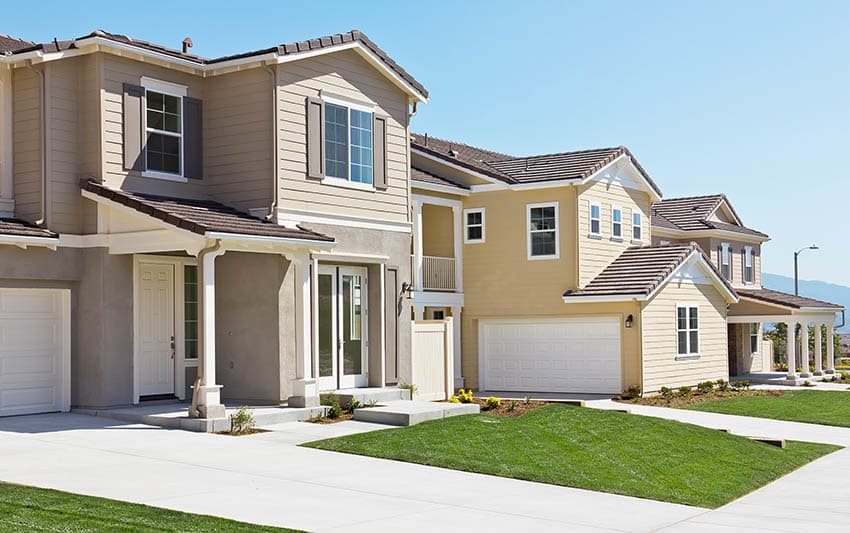
When homeowners think of siding, they tend to limit themselves to one material. When desiring wood siding, they find the cost is too high, and the wood requires a lot of maintenance. Combining stucco and wood siding is a way to reduce expenses and upkeep and create an exterior with an admirable home design.
Stuccoed walls with wood siding are perfect for homes in natural environments like thick forests or woodlands. Typically, the plaster covers the bottom of the home, and the wood covers the upper area of the home’s outside walls. Still, any choice of walls or sides works with this complementary pair of siding materials.
Two of the most popular materials used for interior walls are drywall and plaster. Plaster is similar to stucco but is used primarily for the interior. Read more about stucco vs plaster here.
Cost to Stucco a House
Stucco presents many great options for siding, but it is more costly than many other siding choices. This durable siding offers benefits to offset the additional cost, such as long life, the flexibility of color choices, textures, and added protection against fire risks. The average cost to stucco a house in the U.S. is $4 to $10 per square foot. Read more about the cost to stucco a house in this article.
How to Stucco a House (Application Process)
Applying stucco to a house is time-consuming and typically done in several layers. Be sure the texture has a rigid surface such as plywood, particleboard, cement board, or exterior grade gypsum sheathing.
Some contractors apply the mixture on a frame only by driving nails into the studs, equally spaced, and stringing wire tightly between the nails. The texture layer sits on a metal lath connected to the wire. Although this is possible, it results in a weak finished wall and is not recommended.
The surface is then covered with building paper, a rain screen, Tyvek drain wrap, or 15 lb roofing felt. Once covered, the contractor attaches metal or wood lath to the wall and adds several types of hardware, including metal control joints that prevent future cracking.
The surface is now ready for the mixture, and it is applied with a trowel. The material must dry completely between each layer so no moisture remains trapped between layers. Most stucco applications require two coats, but it’s typical for a contractor to use three.
Traditional Stucco – Traditional mixtures involve a first and second scratch coat, with horizontal lines scored into it using a notched trowel, known as pricking-up coats. The second coat, the brown coat, allows the finishing coat to have a surface to bind with. These coats build up the thickness of the wall cladding. The third coat is the finishing surface applied with different types of trowels to create a textured finish.
One Coat Stucco – Newer applications include One Coat, that’s made from Portland cement and sand-like traditional mixtures but includes fibers and special chemicals, making it very efficient. One Coat mixtures are pliable, allowing easier application. It comes premixed in many colors and takes well to acrylic paint. It’s resistant to cracking because of its flexibility.
Two Coat Stucco – If applying the finish to brick, stone, concrete, or masonry, it’s not necessary for a second brown coat. The hard surfaces do not require additional layers to build up a base and doen’t require lath placement. The finishing coat goes on top of the initial layer designed with whichever texture the homeowner chooses.
Synthetic Stucco – Synthetic mixtures contain acrylic resin instead of cement and lime. This makes it more resistant to moisture damage and very flexible; it moves enough to prevent cracks from the soft ground or a shifting foundation. Synthetic applications go directly over foam board instead of lath and dries quickly.
Painting Stucco Houses

Stucco is easy to care for, but years of wear may reveal cracks, chips, staining, or tarnish. Regular maintenance prevents the material from needing repair, but even walls in good shape may need refreshing or a new color to match your home’s new style. Painting stucco is a great way to revive your home’s exterior finish. Before painting, examine the surfaces carefully, looking for areas that need repair. It’s recommended that walls be repainted every 5 to 10 years.
Look for chips and small areas that are peeling or cracked. A plaster repair kit usually provides the supplies needed to do minor repairs. Mixture material is included in these kits to fill in cracks and rough areas. If there is more damage than a kit can handle, it may be better to hire a professional. When the repairs are completed, let the walls sit for 7 to 10 days to dry and cure all the areas completely. If painted too soon, any moist areas will come off.
The next few tasks involve pressure washing the walls to remove dirt and grime, locating any mold and removing it with a mold removal solution, and finally, applying a primer meant for the type of existing texture you have. For example, stained stucco requires a stain-blocking primer. Let the primer dry completely before painting. Don’t rush the drying times; plaster is prone to moisture damage if not left to dry properly.
When painting the siding, choose between using brushes and a roller or a paint sprayer. Painting the textured walls by hand is feasible when the texture is smooth, such as sand or a smooth finish. For coatings with a rough finish or numerous lines, such as a worm finish or a cat face finish, spraying ensures all the uneven surfaces are covered. Once the painting is done, let it dry completely and enjoy the new look.
Painting Costs
Painting plaster cladding is a do-it-yourself job or a job for a hired professional. The high cost of labor may deter homeowners from hiring a professional. The table below shows the different averages for painting a house with plaster cladding. These costs will vary according to the home’s location, the cost of supplies, equipment rental, and any fees involved for cleanup.
PAINT/SUPPLIES LABOR REPAIRS CLEANUP TOTAL
Do-it-Yourself Cost
- Paint supplies: $2,000
- Labor: 0
- Repairs: $200
- Cleanup: 0
- Total: $2,200
Professional Cost
- Paint supplies: $4,000
- Labor: $4,500
- Repairs: $1,400
- Cleanup: $750
- Total: $10,650
Stucco Maintenance & Care
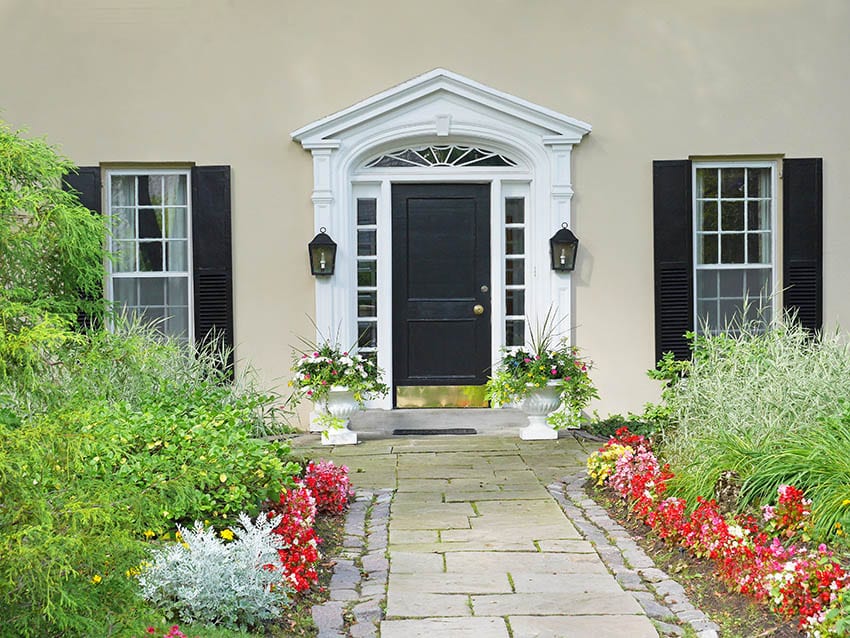
Exterior plaster siding that is solid and sealed properly does not require much maintenance. The important thing is to do regular cleaning and inspections. Look for damages that could allow moisture to get behind the surface and cause extensive chipping and mold.
How to Clean Stucco Exteriors
Plaster wall exteriors need to be washed two to three times each year. Washing preserves the integrity of the surface and is as easy as using a garden hose or pressure washer. A garden hose works well for smooth finishes but may not remove all the dirt and dust embedded in a rough texture. Use a deck scrub broom to remove stubborn dirt. Avoid applying too much pressure to avoid damaging the finish.
A pressure washer is faster and involves less labor. Many home pressure washers have an attachment to fill with soap if the surface is very dirty. Although a pressure washer needs around 1500 PSI, use care when spraying the walls. A fine spray may leave lines on the surface, or a fanned-out spray could dislodge grains of sand. Test a hidden area of the plaster wall first to determine the correct distance and width of spray to use.
Yearly Stucco Inspection
Inspect wall plaster each year, twice a year, if feasible. Any cracks, holes, chips, or damage require immediate attention to prevent further damage.
Issues with Plaster
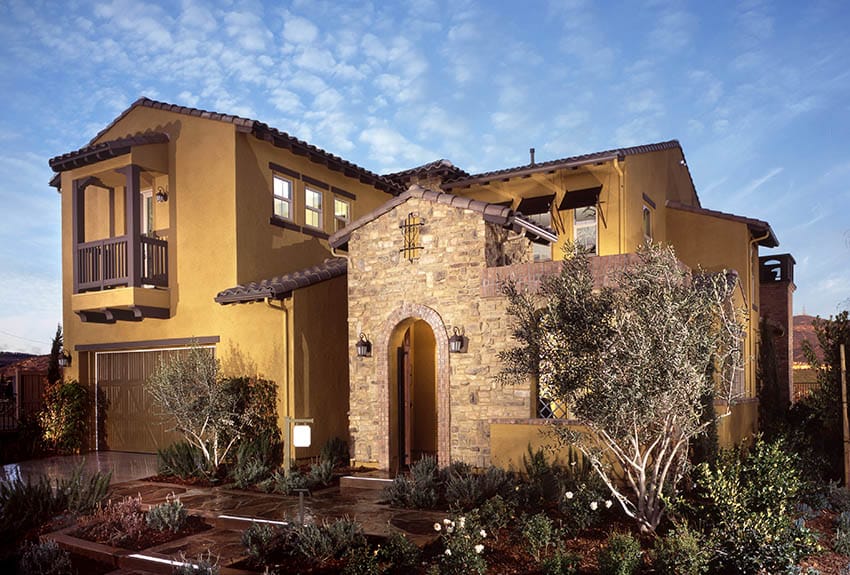
Wall plaster siding may be durable and long-lasting, but problems occur without proper installation or regular maintenance. The biggest enemies of plaster are water, mold, and termites. If not corrected right away, these issues eat away at the material behind the scenes, damaging the wall integrity so badly that it needs replacing.
Soft soil or sand under a home’s foundation is another problem for this finish. A light shift in the ground that causes the home’s foundation to shift will cause cracks. Small or large, any crack needs a quick repair. The moisture attracts termites to the dark, damp crevices behind the surface, and colonies will eat away at the interior studs and framing. Other damage may occur, such as ruined insulation and mold eventually entering the inside of the home.
Is it a Risk to Buy a House with Cracked Stucco?
When purchasing a stuccoed house, be sure to have the surfaces inspected by a professional. While the exterior finish may only reveal small blemishes on the surface, there may be extensive damage underneath. Look for badly patched areas: Messy patches with uneven surfaces, a mismatched finish, and a different color indicate a professional did not do the repair.
The risk of buying a damaged house may deter mortgage companies from approving a loan. A thorough inspection satisfies both the inspector and the new homeowner, who knows there won’t be extensive repairs or structural failures shortly after the purchase.
How Long Does Plaster Cladding Last on a House?
Plaster cladding will last decades on a home exterior, from 50 to 80 years. The proper installation, maintenance, inspections, and repairs result in a long-lasting and beautiful exterior that enhances the presentation and value of a home.
For more related ideas, visit our ceiling texture designs article here.

